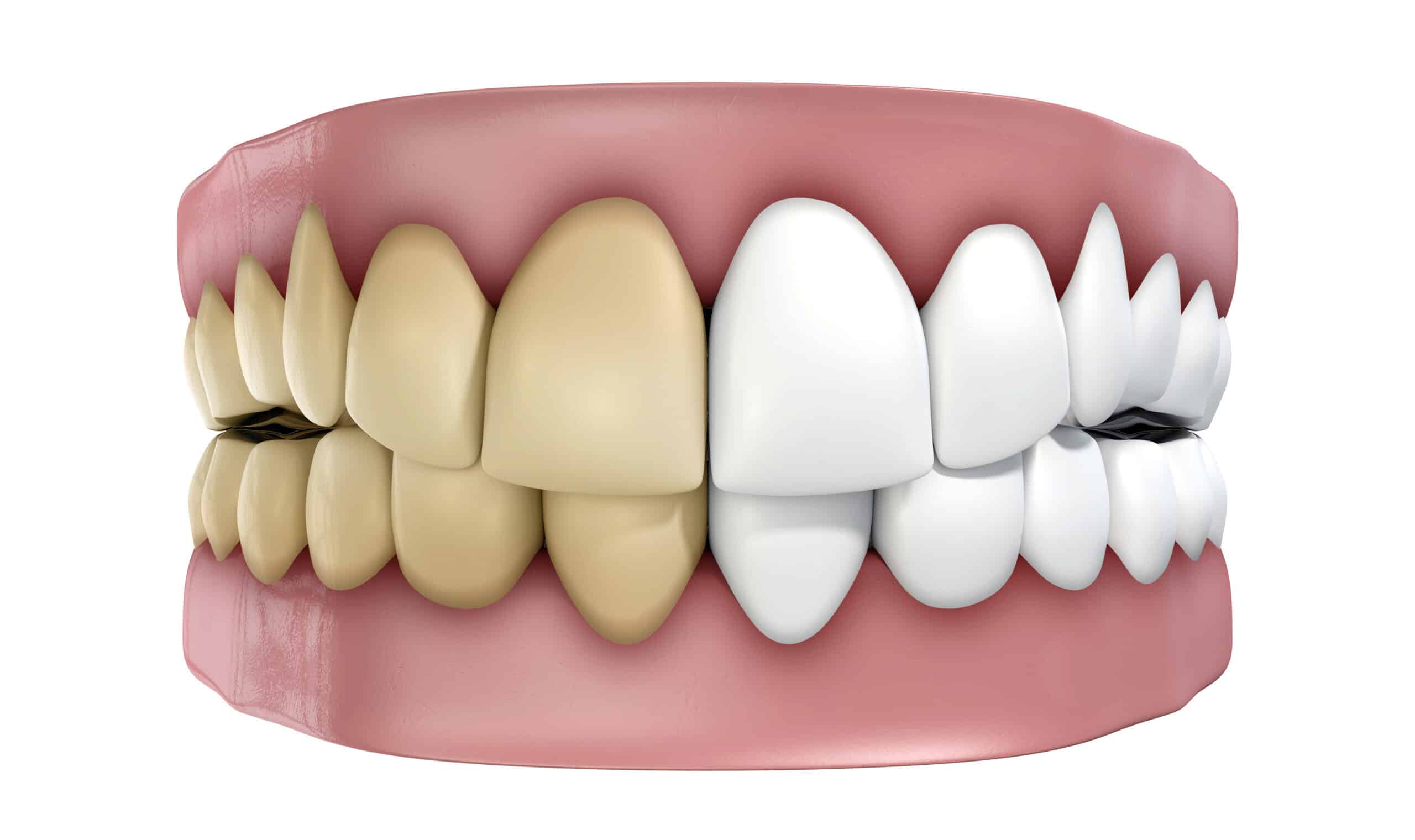No one likes brown stains on their teeth. You don’t think about how your teeth will look in years to come when you start drinking coffee, tea, soft drinks, or start smoking. Then, one day, you’re looking at your smile and your teeth look horrible.
You vow to change your habits but that won’t get your white teeth back. Over-the-counter products have some limited success. You will need a dentist with some high-tech skills to remove the brown stains from your teeth.
Read further to find out more about your dental options.
Cleanings
A dentist or hygienist will examine and clean your teeth before trying any whitening products on them. It’s important to know if teeth are damaged or if there is any gum disease before worrying about aesthetics.
Gum disease and cavities are underlying problems associated with plaque and tartar and must be addressed first. These diseases could cause not only permanent staining and tooth discoloration but tooth loss.
Plaque and tarter also contribute to stains so removing them will help the overall look of your teeth along with keeping them healthier and disease free.
Types of Cleanings
There are two types of cleanings that a dentist’s office will offer. One is a general cleaning and the other is a deep cleaning. Most dental patients need a general cleaning that is typically performed by a hygienist. The hygienist will use a tool called a scaler to scrape off tartar and plaque from all your teeth. This is particularly crucial around the gum line but also includes plaque and tartar between teeth.
Then, the hygienist will take a tool to give your teeth a professional brushing. The tool sounds like a grinder but it’s really a powerful electric toothbrush. The toothpaste used has a grit feeling to it and the hygienist uses it to scrub and polish your teeth.
The cleaning is complete with the hygienist giving your teeth expert flossing.
Deep Cleanings
Patients who need a deep cleaning are those who have an excessive amount of tartar and plaque. These could be people who haven’t been to a dentist in years, don’t have good dental hygiene, or sleep with their mouths open and have other habits that contribute to problem mouths.
Many of these patients have gingivitis or gum disease.
Deep dental cleanings are different from regular cleanings in one significant way. They are invasive. Regular cleanings focus on tartar and plaque above the gum line. Deep cleanings get rid of bacteria, tartar, and plaque below the gum line even down to the roots of your teeth. This prevents gum disease from progressing.
A dentist usually performs deep cleanings because of the more invasive nature of the procedure.
Your dentist will start by using a scaler to manually remove plaque and tartar. They will likely also use another tool that is ultrasonic and has a vibrating metal tip in this process. Then, the dentist will start root planning.
Root planing smooths areas of your teeth’s roots to prevent bacteria from sticking to them. The dentist may use an antibiotic gel and could prescribe an oral antibiotic to help kill bacteria.
Deep dental cleanings can cause some pain and discomfort. A dentist may administer a local anesthetic to reduce pain. This will numb your gums while they are being cleaned.
Whitening Procedures
Dentists can whiten your teeth with an in-office procedure that is much more effective than any home whitening kit. That’s because the dentist uses a bleaching solution that is significantly strong than what is in home kits.
All tooth whitening solutions contain a peroxide-based chemical for bleaching. The difference is those dentists use consist of 15 to 43 percent peroxide while at-home kits contain only 3 to 20 percent peroxide solutions like carbamide or hydrogen peroxide.
The other big difference between trying to whiten your teeth at home and in a dental office is the dentist will use ultraviolet light to activate the bleaching gel. This results in your teeth getting whiter faster and staying whiter longer.
In some cases, stained, brown teeth can be lightened from three to eight shades brighter.
The in-office procedure can take up to an hour and that depends on the extent of the staining and the type of system the dentist uses. Part of the time spent in the dentist’s chair isn’t for the whitening work the dentist performs but for sitting under the light and waiting for the gel to activate. While this can be uncomfortable, it isn’t painful. However, those who have trouble sitting still for an extended time may want to talk to their dentist about sedation.
That is especially true for highly anxious people or those who have a fear of dentists.
Going to a dentist to get your teeth whitened can be done about once a year without any adverse effects on your teeth. You have to be careful about how many times and how often you use at-home systems. Using it too much can cause teeth sensitivity and damage the enamel.
A dental office whitening session is more expensive than at-home versions with costs ranging from $500 to $1,000 but whitening produced by a dentist will last about a year. At-home whitening only lasts a few months.
Any whitening system is going to be temporary and how long it lasts depends on your lifestyle and oral maintenance. Habits like smoking and drinking beverages like coffee, tea, and soda are going to stain your teeth faster than normal.
Whiting toothpaste can help maintain your bright smile and some are better than others. Your dentist can tell you which ones are recommended.
A good oral hygiene program includes brushing twice a day and regular flossing. Not only will this help your teeth look their best but will also contribute to their health.
New Technology
The Zoom whitening system is becoming more popular with dentists. Officially, it’s called the Philips Zoom Blue LED system. It’s different from traditional whitening methods in two ways. The biggest difference is that it can whiten teeth up to eight shades when more traditional methods may not.
The other difference is it’s faster with a promise that it can work in 45 minutes when traditional whitening systems in dental offices typically take an hour.
A third but less obvious way the Zoom system is different is that it allows for more customization of the whitening process.
The Zoom system uses LED light-accelerated technology as a primary component. Like traditional whitening systems, it uses a gel to bleach teeth. However, the Zoom gel has amorphous calcium phosphate in it also. This helps increase enamel protection as well as make teeth brighter and limit tooth sensitivity that can come with whitening.
The Zoom system also includes the dentist providing patients with a take-home kit to maintain their bright smile between visits. However, the pricing could be more expensive than traditional whitening depending on the dentist’s office and location.
Talking to Your Dentist
It’s important to talk to your dentist about your concern over your teeth’s appearance. A dentist can offer solid recommendations for improving the brightness of your smile and help you determine whether you need an in-office whitening procedure or should try it yourself at home.
Either way, there are ways to remove ugly brown stains from teeth. A frank discussion with your dentist can be the start of your new, bright smile.



